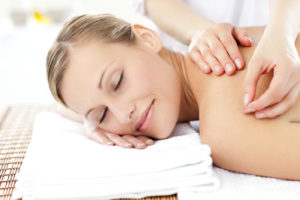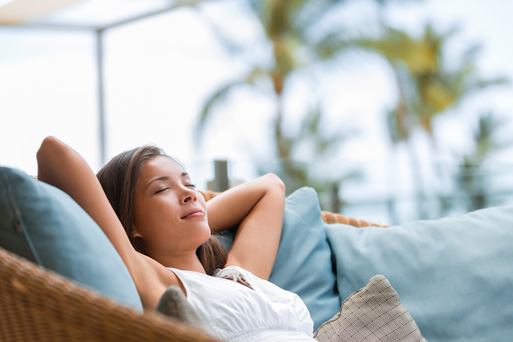How to Relax Your Mind and Muscles. 5 Simple Techniques
Achieving a state of total relaxation should involve the body and the mind simultaneously. While certain therapies target either one or the other, there are a few techniques you can try to achieve the full effect. In this article, we will discuss the top five methods that unwind your muscles and put your thoughts at ease simultaneously.
5 Techniques to Try
1. Chiropractic Treatment
Chiropractic treatment is more than a massage. Due to his or her knowledge in the field of health sciences, your doctor will improve the functioning and wellbeing of your musculoskeletal system by using techniques such as adjustments and soft tissue therapy. Depending on what the nature of your ailment is, the approach will differ.
Usually, a chiropractor intervenes when the patient has suffered an injury in the arms, legs, back, and so on. However, such a physician can also enhance your general health through methods that assist you in relaxing the body and mind while relieving pain, tension, and other potential discomforts in the process.
What is more, a chiropractor will also offer you treatment for headaches, or what the community considers ‘referred pain’. This type of distress originates somewhere else in the body and acts as a signal that something, somewhere isn’t working properly. Treating these bouts that seem to come out of nowhere is a great way to balance your life.
2. Acupuncture
 Ancient Chinese medicine relies on the body’s energy canals to stimulate health. When illnesses arises, the philosophy behind the practice believes it is due to a blockage in the meridians through which our vital qi flows. By stimulating various pressure points, acupuncture aims to clear them and stimulate organic healing processes.
Ancient Chinese medicine relies on the body’s energy canals to stimulate health. When illnesses arises, the philosophy behind the practice believes it is due to a blockage in the meridians through which our vital qi flows. By stimulating various pressure points, acupuncture aims to clear them and stimulate organic healing processes.
According to a 2010 study, acupuncture yields physical and mental benefits for patients that are both short and long-term. The research conducted by Jun J. Mao, M.D., under a grant offered by the National Center for Complementary and Integrative Health has demonstrated that this olden Chinese method is effective in the treatment of various ailments.
Test subjects suffering from lower back pain, chronic neck pain, knee osteoarthritis, and headaches have all exhibited visible improvements following this line of therapy. In addition to this, acupuncture is a relaxing experience that puts your mind at ease while treating the aches in the body. It improves sleep and emotional wellbeing, as well as digestive processes.
3. General Massage
Getting a massage every once in a while is a great way to reconcile the body and the mind. By manipulating, rubbing, and strategically pressing your skin and tissue in all the right places, this type of therapy effectively reduces the incidence of pain, stress, and tension. Thus, it has the ability to better your quality of life and put your mind at ease.
In addition to this, it also helps diminish the symptoms of anxiety, insomnia, headaches, fibromyalgia, joint pain, injury-related soreness, and digestive issues, among others. What is more, its directness often triggers feelings of comfort and connection in patients, which is another tool on the path towards total repose.
The main appeal of massages lies in the fact that sessions require no prior preparation. You just schedule an appointment, show up, and inform the therapist on what ails you. Then, he or she will proceed to handle the problem areas and promote their recuperation. However, if the discomfort you experience is severe, always consult with a doctor beforehand.
4. Aromatherapy
The practice of aromatherapy has been used by mankind for calming and healing purposes for over 5,000 years. It is a type of alternative medicine employed for its antibacterial, anti-inflammatory, and analgesic properties. The main focus is on the handling of numerous fragrant essential oils obtained from a wide variety of herbs with amazing restorative abilities.
It’s no secret that plants themselves contain several beneficial compounds which they use to protect themselves from the external conditions of their environment. Therefore, extracting their vital juices transfers those curative powers onto the human body. The oils are attained through distillation, then mixed with alcohol. This makes them volatile.
For this reason, they are always mixed with other valuable carrier oils, such as coconut oil or jojoba oil. As a form of treatment, they can be utilized in many ways. Inhalations are a popular approach, as is soaking into bathwater that has been infused with them. And, of course, massage therapy is another popular possibility, as the oils are rubbed directly into the skin.
5. Meditation
Meditation is yet another oriental practice whose history began many millennia ago. In fact, archaeologists place its origins as early as 5000 B.C., with the first documented record occurring in the Vedas teachings of the ancient India of 1500 B.C. Nowadays, this practice has become immensely popular in the Western world too, so it is available to all those who wish to pursue it.
Furthermore, when compared to all the other techniques on this list, it is the best one to pursue at home. In fact, it is recommended that you engage with it in an intimate setting where nothing can distract you. To help you get started, you can listen to guided meditation tracks. Remember, just a few minutes per day will greatly relax your body and mind alike.
The benefits of meditation are many. A 2013 study has demonstrated that mindfulness reduces the inflammation caused by stress, while research conducted in 2012 on 2,466 participants uncovered that it lowers anxiety levels as well. Self-reflection is an excellent promoter of emotional health, and it unwinds the muscles in the process as well.
The Bottom Line
Treating musculoskeletal ailments and soothing the mind in the process is completely possible with the five therapies detailed above. Depending on what your personal needs and preferences are, you will need to choose the one that is most suited for you. Of course, they can also be pursued in collaboration. When in doubt, always ask your doctor or of course, your Vancouver chiropractor about them.
Author Bio: Steven Watson is a writer and contributing author at Echiropractor.org. He is studying to become a professional chiropractor and in his spare time he enjoys reading medical journals in order to improve his expertise. He also loves to write on medical topics with every occasion he finds, guest blogging for several online publications.


